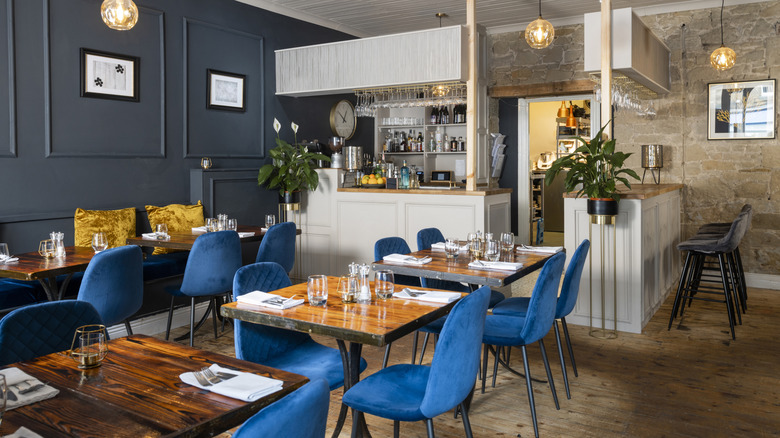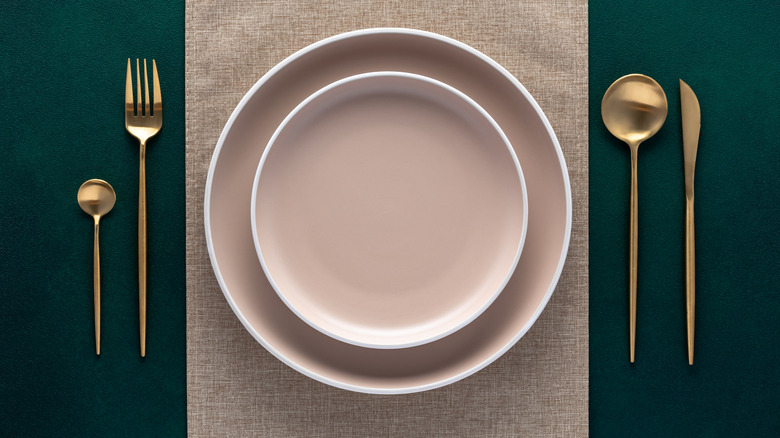The One Assumption You Should Never Make Walking Into A Restaurant
There can be tempting reasons to seat yourself at a restaurant, from taking the last available table to being the only customer in the dining room. But you should never seat yourself at a restaurant unless a sign or an employee explicitly tells you to. Just because tables appear available doesn't necessarily mean you can sit there.
Former restaurant server Neala Broderick told Tasting Table that seating parties at a restaurant is "actually an insanely meticulous process that takes as much precision as juggling." Customers without restaurant work experience may not understand that the restaurant has sections for each server, which the host must balance by strategically seating guests so that all servers get a fair share of work.
If there are no seating instructions, wait by the host stand — or whatever is near the entrance that might look like a host stand. Worst-case scenario, ask a passing employee what to do. But odds are someone will come by and take care of you before that.
Etiquette tips for the prim, and casually proper
Beyond just seating people evenly, if the restaurant takes reservations, the host must also balance those through the service, along with the different table setups that may be required for larger parties. The restaurant staff has experience with fitting in reservations and walk-ins seamlessly, so seating yourself can throw a wrench in their plans. This also leads to a fundamental reason for some restaurant etiquette rules: being considerate to others. Sometimes, etiquette has a reputation for being overly fancy and outdated, but waiting for direction from an employee about where to sit is neither fancy nor outdated.
One etiquette expert has several modern dining tips, one of which is timeless. Being fully present at your meal is, first and foremost, kind to your fellow diner. But putting away handbags, phones, and other personal effects also leaves more room for servers to place items on the table. This is especially helpful in small restaurants, which often use compact tables to maximize space.
Another etiquette tip is useful for non-verbally telling the server that you're done eating. When you're finished with your plate, place your knife and fork (or other silverware) on the plate, aligned with its center. There are other details for fine dining situations, like crossing the silverware to indicate that you didn't like the food, but cutlery on the plate is a clear general sign that your plate can be cleared.
Static Media owns and operates Daily Meal and name of Tasting Table.

